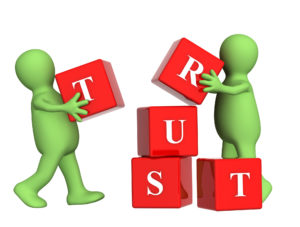RedPen Mentoring
Challenge 4
In Challenge 4, we stay with the prospective audience and try to understand them a bit better. Understanding them better could lead to communicating with them more effectively. That’s the plan!
From Challenge 3, you ‘know’ your prospective audience – who they are and where they are – and you have begun to make them aware of your existence.
Now, the aim is to segregate them so that you can decide how best to communicate most effectively with them, individually.
How?
Prospects can be categorised as being one of three types.
- The Oblivious have no idea who you are, are ignorant of what amazing products/services you have to offer (or will have in the future). They are also sublimely unaware that they have a ‘problem’ which you could solve for them.
- The Afflicted know there is something wrong – they feel the pain! – but they don’t know how to solve their problem and they don’t know you well enough to realise that you have the solution for them.
- The Informed know they have a problem, are aware that you are offering a solution to that problem. They know, like and trust you and might buy your product/service from you. Yeah!
Task 1: What is your USP?
For this first task, as with Challenge 2, focus on ONE product / service that you can provide (existing or planned) and, for that product / service write down what problem it solves for the informed prospect.
For now, don’t fret over the Oblivious or Afflicted prospect. Instead, identify, from the viewpoint of an informed prospect:
- What is so special about you (your service/ your product)?
- What makes you stand out from the crowd
- If a light were shone on you – if you (your service/ your product) were put in the spotlight – what wonders would be revealed?
What is your USP (unique selling point)?
Task 2: Mind the gaps

© Goytex | Dreamstime.com
For this second task, look back to Challenge 3, where you wrote a CV for your ideal audience member.
You imagined a single person in your audience. You were precise about age, gender, interests, lifestyle and any other relevant data.
Now, for this challenge, you will amend this vision – refine it – three times over: once for the Oblivious, once for the Afflicted and once for the Informed.
Think through the stages that someone goes when they first discover you, when they get to know you/your service/product better, and when they begin to feel comfortable with you – comfortable enough to buy from you.
Visualise the entire client/customer journey: from Oblivious, to Afflicted, to Informed – and then becoming a client/customer of yours.
- What differentiates these three stages for the prospective client/customer?
- What are the gaps (in knowledge, experience, etc.) that separates these three stages along the client/customer journey?
- What are the stepping stones on that client/customer journey: from Oblivious, to Afflicted, to Informed?
Task 3: Bridge the gaps!

© Frenta | Dreamstime.com
Now, that you’ve identified the stepping stones, what might you need to do to bridge the gap between these stepping stones for these prospects?
How can you help your audience to advance – from Oblivious, to Afflicted, to Informed – so that they might, maybe, become a client/customer of yours?
Remember: you want them to know, like and trust you.
Do it one step at a time.
Ask yourself: What might work to advance these folk from Oblivious to Afflicted, and then from Afflicted to Informed?
- You might have knowledge you can share.
- You might need to be generous with time and/or information.
- You might need to reveal more about yourself, to make yourself more approachable.
For each gap (Oblivious to Afflicted, Afflicted to Informed), list three things you might do / say / write to help members of your audience to move forward on their client journey with you.
If you have any questions about this challenge, you could raise them in the RedPen Mentoring Facebook group and/or in the thread for the next Facebook event for our monthly MMM. I’ll then aim to include that topic in that session!
And/or we could discuss this challenge during your next catch-up session.


